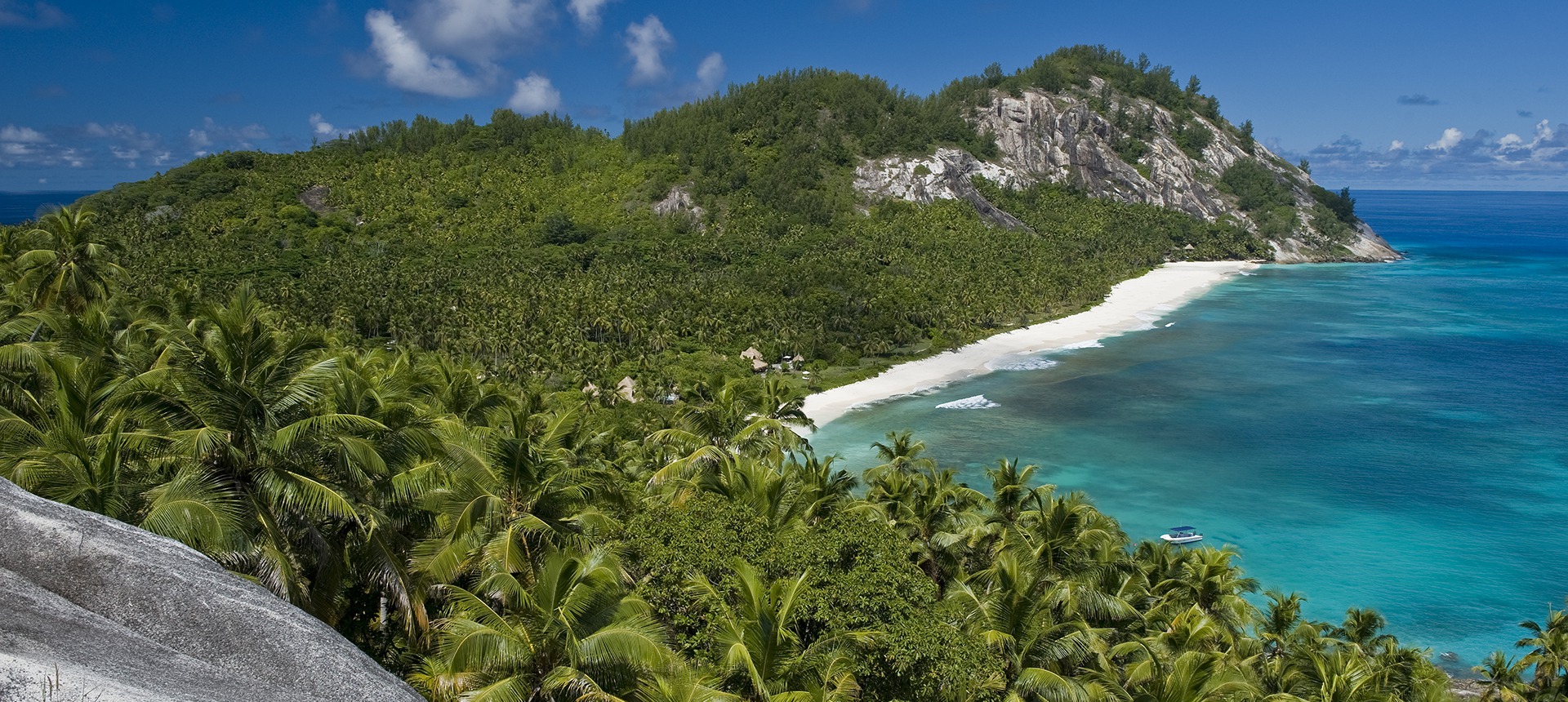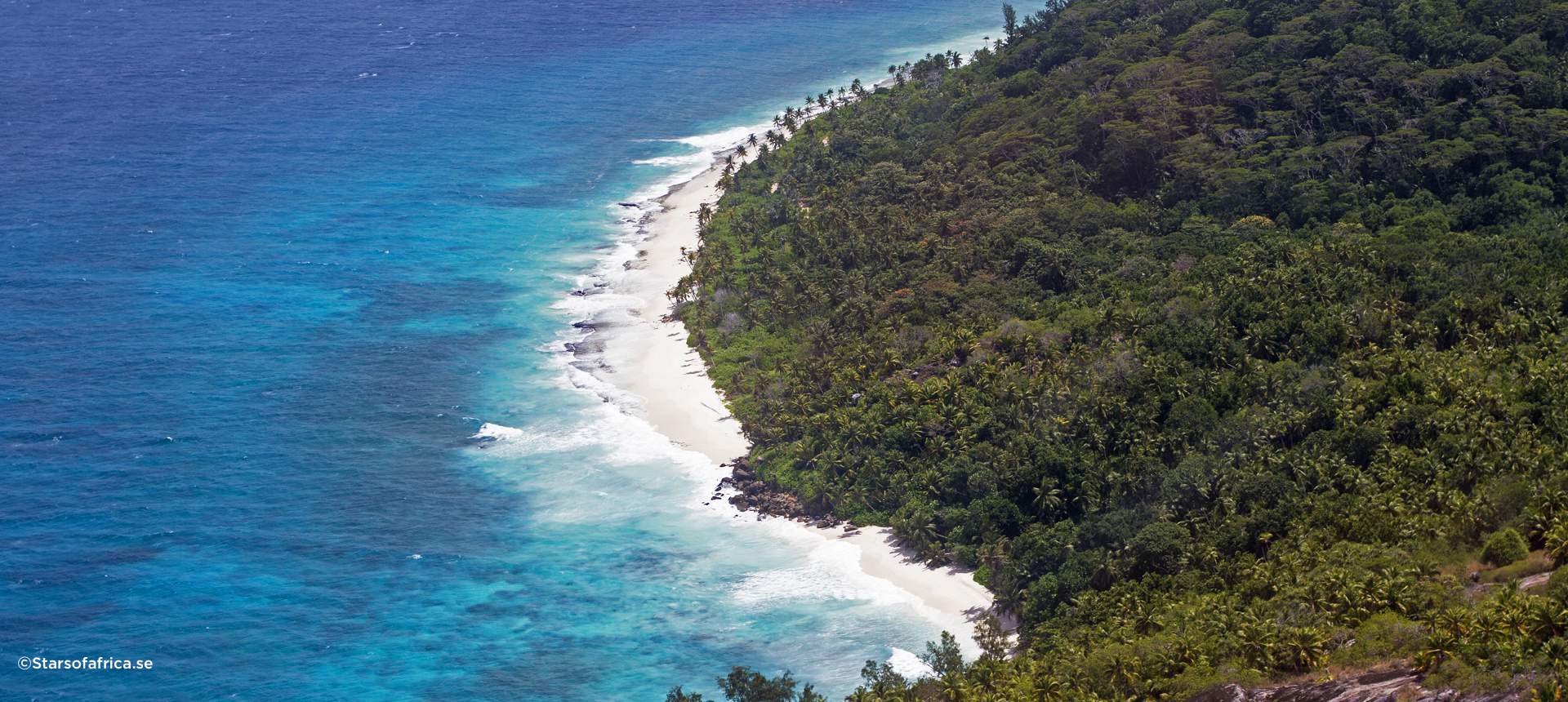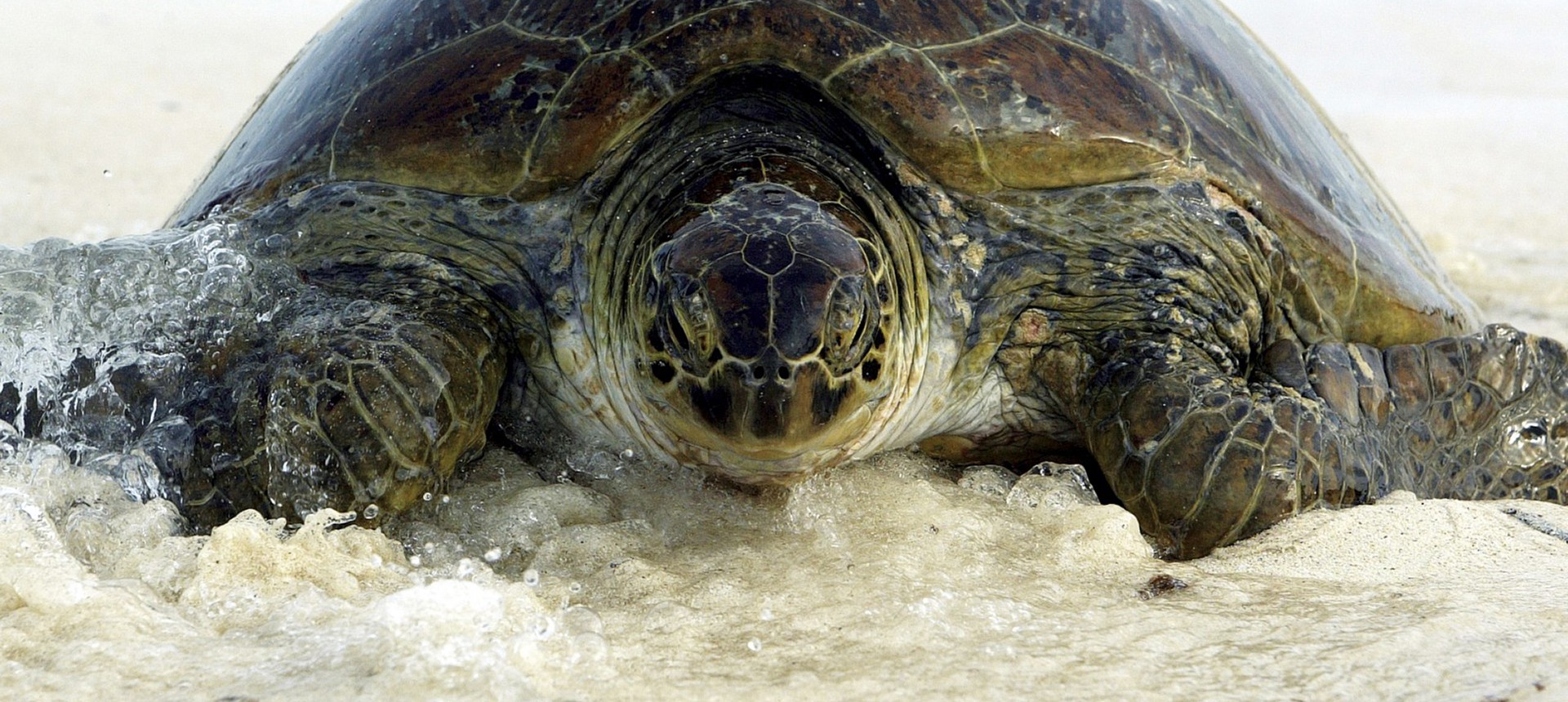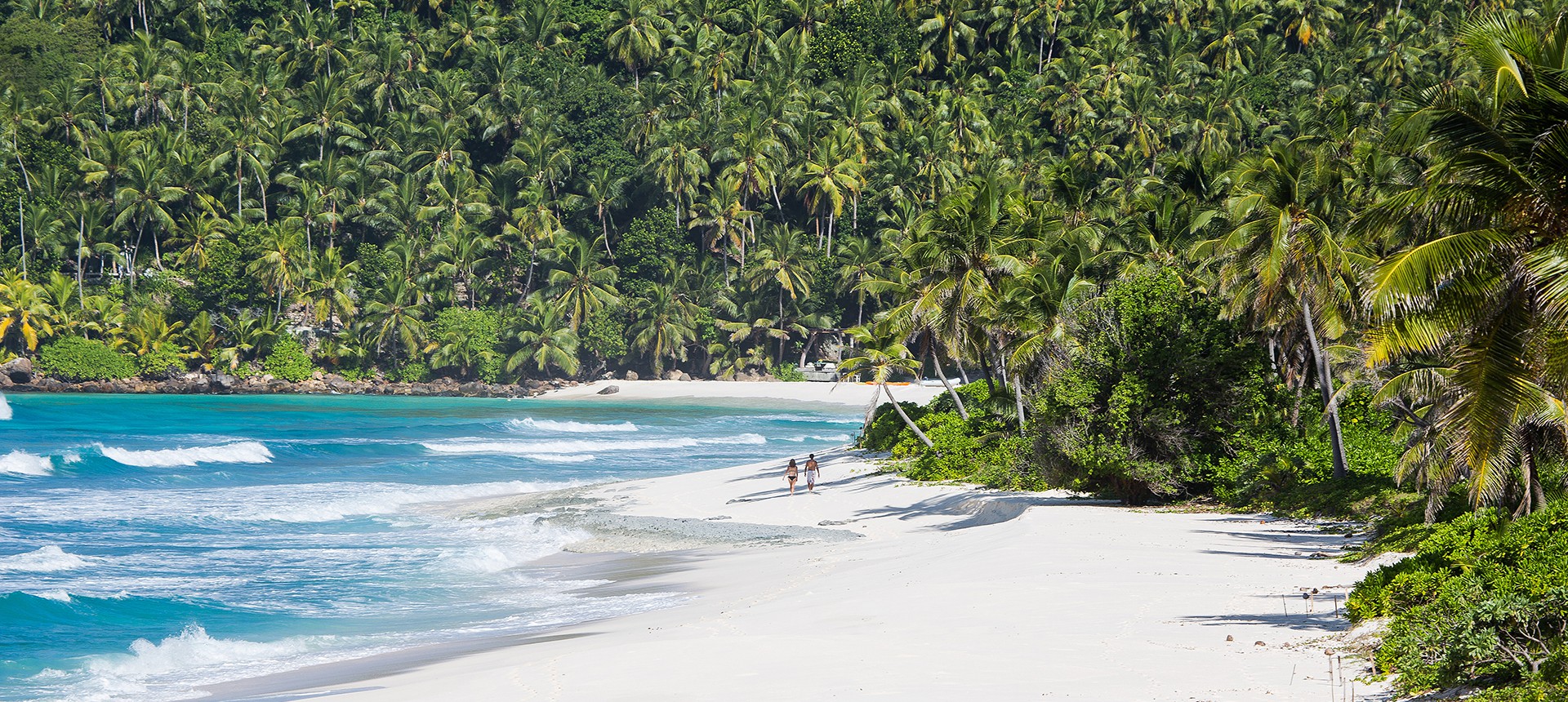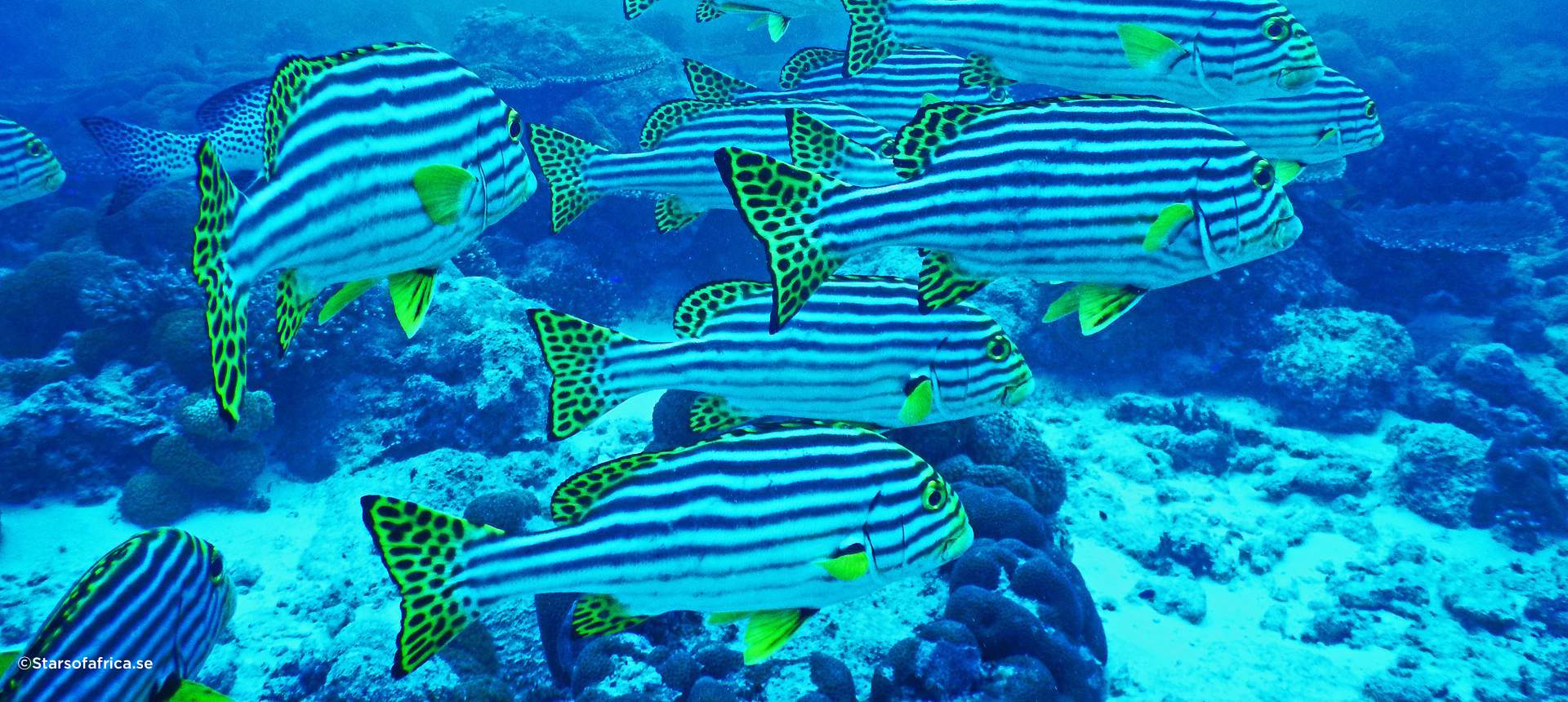SEYCHELLES
THE WORLD’S MOST BEAUTIFUL ISLANDS
The timeless beauty of the Seychelles islands – both above and beneath the sea – is legendary, and has captured the imagination of successive generations of travelers from the earliest voyages of discovery up to the modern day. The Seychelles’ sapphire sea, powdery white sands, spectacular coral reefs and verdant hillsides festooned with coconut, cinnamon and banana plantations all offer terrific photographic opportunities. Higher up in the misty forests the exquisite wild orchids epitomize Seychelles’ fragile, rare beauty. Nature abounds with spectacular giant tortoises, especially as they nest on the tranquil beaches. Unique birds such as the Seychelles bulbul, fruit pigeon and black parrot speckle the sky. Tropical waterfalls and the endemic coco de mer dot the landscape. All that is a dramatic backdrop to days of pure relaxation or adventure alike.
The Republic of Seychelles is a cluster of 115 islands scattered like gemstones across the Indian Ocean 1,000 miles off the coast of Kenya. In all, only 16 of the 115 islands are inhabited. Mahé is the largest of the islands and is covered with unique plants and exquisite beaches where giant granite boulders line the shore. Victoria, the capital of the Seychelles, and the Seychelles International Airport are both on Mahé. Victoria buzzes with cosmopolitan activity in the lively markets where exotic spices and colorful fruit abound. Luxuriant catamarans ply the crystalline waters amidst the fishermen bringing their catch to the harbors. Mahé is also home to a majority of the hotels and more than 85 percent of the republic’s 90,000 inhabitants.
Of the islands, 43 are known as the Inner Islands. These islands – including Mahé, Praslin and La Digue – are the earth’s only oceanic islands of granitic composition. Rocky, grey boulders jut abruptly from the ocean and rise to create a relatively mountainous inland area. These islands are generally surrounded by white beaches, often referred to as some of the most beautiful beaches on Earth. The remaining islands, the Outer Islands, are flat, low-lying coral atolls and reef islets. The most famous of these is Aldabra atoll, the world’s largest raised coral atoll, where over 150,000 giant tortoises, sea-feeding reptiles, robber crabs and seabirds live.
Where to stay
HISTORY
A transit point for trade between Africa and Asia, the Seychelles islands were occasionally used by pirates. The French began to take control of the islands, starting in 1756 when they laid a Stone of Possession. The islands were named after Jean Moreau de Séchelles, Louis XV’s minister of finance. Britain took full control in 1810 and independence was granted in 1976 when they became a republic within the Brittish Commonwealth. Today the Republic is often described as a beautiful fusion of peoples and cultures. Numerous Seychellois are considered multiracial, with a blending of African, Asian and European descent to create a modern creole culture. Evidence of the harmonious blending is revealed in Seychellois food that incorporates various aspects of French, Chinese, Indian, and African cuisine.
CONSERVATION
Like many fragile island ecosystems, the Seychelles saw the loss of biodiversity during early human history. The losses included the disappearance of most of the giant tortoises from the granite islands, the felling of coastal and mid-level forests and the extinction of some species. Today the Seychelles is known for success stories in the protection of its flora and fauna. Environmental legislation is very strict, with every tourism project having to undergo an environmental review with a lengthy process of consultations with the public and conservationists. The Republic of Seychelles is a leader in sustainable tourism. The end result of the work in sustainability is an intact and stable natural environment. The country holds a record for a very high percentage of land under natural conservation – nearly 50 percent of the total land area. Having earned a reputation as a paradigm of ecotourism, the Seychelles is a top spot to watch birds and giant tortoises in their natural habitat.
MARINE LIFE
The marine life around the islands, especially the more remote coral islands, is spectacular. More than 1,000 species of fish have been recorded in the area. The Inner Islands’ marine life reveals an abundance of fish on shallow inshore reefs and features a wide variety of fish, including butterfly fish and angel fish, soldier fish, squirrel fish and sweepers among many others. The island reefs are also havens for many invertebrates including octopus, spiny lobster, and a plethora of nudibranchs, such as the Spanish dancer. Sites with regular current flows support fan corals and colorful tree coral formations. More remote locations shelter the larger fish species, such as the Napoleon wrasse, giant grouper, reef sharks and ribbon-tailed stingrays. Possibly the most spectacular sightings in and around the Inner Islands are the plankton-eating whale sharks with thepPeak sightings being in August, and October through January.
Marine life around the relatively isolated Outer Islands tends to be even more prolific, with frequent sightings of many of the larger grouper species, particularly the spotted potato bass as well as grey reef, silver tip, nurse sharks and the occasional hammerhead shark.
DIVING & SNORKELING
With islands scattered across the Indian Ocean between 4 and 10 degrees south of the Equator, the Seychelles offers diverse and impressive diving opportunities. The Inner Islands rest on a shallow plateau with prolific marine life, and the excellent PADI diving facilities allow divers access to a multitude of dive sites. The Outer Islands to the south of the archipelago are all coralline or sand cays and mainly uninhabited, presenting experienced divers with excellent opportunities to explore where few have gone before.
WILDLIFE
From the smallest frog to the heaviest land tortoise as well as the only flightless bird of the Indian Ocean, the Seychelles nurtures an amazing array of endemic species. The Seychelles is a unique environment; the islands became detached from other landmasses at a time before modern mammals had evolved. As a result there are no land mammals occurring naturally, which has allowed particular kinds of biodiversity to develop. The Seychelles is sanctuary for some very rare species of flora and fauna. Bird lovers flock to these shores as nearly 250 different bird species have been identified on the islands, 12 of which are endemic. The giant tortoise survived near-extinction and now there are several thousand on Aldabra, a UNESCO World Heritage Sites. Fruit bats, flying foxes, geckos and skinks are other common animals.
PHOTOGRAPHY
A photographer’s dream both above and below water, the Seychelles offers a wonderful array of photo opportunities and is often described as extremely photogenic due to their palm-lined white beaches. The islands’ underwater paradise with amazing water clarity offers exciting and rare opportunities for the underwater photographer. The Seychelles does not only attract the underwater and landscape photographer, but also the avid bird photographer.
Apart from the volume of photographic subjects, the fact that the birds and wildlife on the islands have very little fear of humans, allows photographers to get quite close to the subjects. Birds nest on the pathways, in season, turtles visit the beaches to lay their eggs, and crabs climb the trunks of palm trees. Fairy terns, sooty terns, noddies and tropicbirds are some of the most attractive and numerous birds to be found on the islands. The endemic paradise flycatcher, kestrel, blue pigeon, black parrot, scops owl, swiftlet, bulbul, brush warbler, magpie robin, white-eye, sunbird and fody make for unique subjects.
Crabs and tortoises abound, with the breeding season for the hawksbill turtle and green tortoises being from October to February. Furthermore, there are over 100 plant species that are endemic, including the coco de mer (a palm tree which bears a fruit with the largest nut of any plant in the world), the Seychelles pitcher plant and the vanilla orchid. The photographic opportunities are sensational. Having the luxury of getting so close to the subjects means that one mostly needs shorter and wide-angle lenses which will add to the usual long-lens portfolio of photos.
CLIMATE
The islands of the Seychelles enjoy a year round pleasant tropical climate, as they are situated outside the cyclone belt, there are no extremes of weather. The temperature seldom drops below 24°C/75°F or rises above 33°C/91°F.
The weather is governed by two opposing trade winds. The southeasterly trades blow from May to September generally bringing dry and windy conditions with choppy seas making it ideal for sailing. This is the most pleasant time of the year for these islands. From October to March the gentler northwest trades provide calmer seas but a higher chance of refreshing showers. Scuba divers will find April, May, October and November to have the warmest seas with visibility often at 30 meters or 100 feet plus. March and April are the hottest months with higher humidity, but the temperature seldom exceeds 31°C/88°F.


